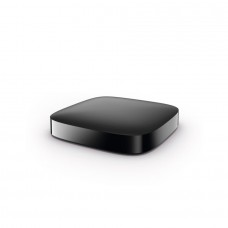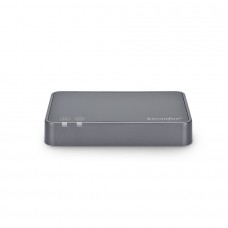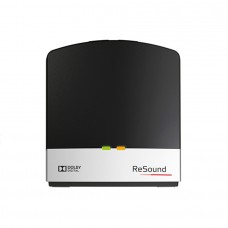How can I listen to TV with my hearing aids?


People with hearing loss experience a great improvement in their quality of life when they become hearing aid users. They listen to music more clearly, perceive the ambient sound of the place where they are or hear the doorbell of their house when they did not hear it before. But, above all, they relate more satisfactorily with other people since they understand conversations better. However, in some cases, we find ourselves with a small problem: despite understanding speech, it is difficult for them to understand it on television. In this post we are going to explain why this phenomenon happens and how we can solve it.
Why can't I listen to television properly?
To answer this question, it is necessary to start from the basis that the main objective of a hearing aid is to make its user understand speech. Manufacturers focus all the systems of their products to achieve this goal and, if possible, improve in other aspects (such as, for example, music) in a slightly more secondary way. Of course, now you are surely wondering: if they improve understanding, why do not I understand that television program that I like so much? The reality is that a small nuance should be added to the first sentence of this paragraph: hearing aids seek for the user to understand speech in person. Therefore, hearing aids are designed with real-world sonority in mind.
Starting from the aforementioned, two factors must be taken into account regarding what we hear on television. For one thing, its speakers reproduce sound in an unreal way. No matter how good it is, a television never reliably provides us with all the nuances that make up each sound. Actually, we are hearing a distortion or variation of the real sound. On the other hand, this problem is also found in the recording itself of what we are seeing. For example, there are users who tell us that they understand a dubbed movie better (where the voices have been recorded in a studio with an ideal environment) than those in the original version (where the sound has been recorded live and with ambient sound). For these two reasons, television does not give us the sound that the voice has in the real world and, therefore, some users do not understand television correctly despite understanding the conversation much better in their day-to-day life.
So how can I fix this problem?
To overcome this difficulty, we can benefit from the connectivity capabilities that current hearing aids provide us. Today, hearing aids with a Bluetooth connection, such as the Audéo Paradise P90 R, are very useful for listening to what mobile phones and tablets play, but only rarely do we find televisions that are directly compatible. To overcome this obstacle, hearing aid manufacturers have created television transmitters or adapters. These are an accessory that connects to the TV (really, to any object that has an audio output) and emits its sound, thus saving the stumbling block of the TV's Bluetooth compatibility. Thanks to these, we can listen to the sound directly in our hearing aids as if they were wireless headphones but with a great advantage over these: the sound we hear is adapted to the programming of them. In this way, we can achieve the maximum understanding of what we are watching on television.
Each brand of hearing aid has its own transmitter that is only compatible with its own hearing aids. For example, Phonak offers the TV Connector, Resound makes the TV Streamer 2 or Bernafon has the TV-A. Despite this unique connectivity, all transmitters have certain general characteristics:

- They are very easy to install and pair with the hearing aids.
- They offer stereo sound compatible with Dolby.
- The volume of the transmission to the hearing aids is completely independent of the volume of the television. In this way, each person, who wears hearing aids and who does not, can enjoy the television with a completely independent volume.
- They can be configured to prevent you from isolating yourself from the outside.
- They are compatible with any television or device with a headphones output.
- An unlimited number of hearing aids can be paired with them as long as they are of the same brand.
As you can see, these types of transmitters are useful and easy to use. With them, there is no longer a reason to turn up the volume on the television.
In this post, we have explained to you why some people continue to have difficulties when listening to the television despite being totally satisfied with their hearing aids in the rest of their lives. As in Claso we are always willing to provide you with alternatives to solve your hearing problems, we have also explained how it can be solved. Now you just need to make up your mind and stop turning up the volume. You will see how your neighbors thank you.
































